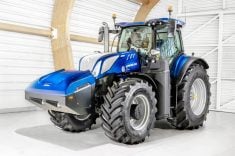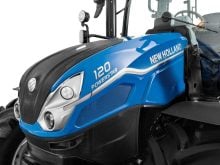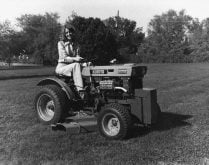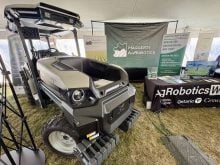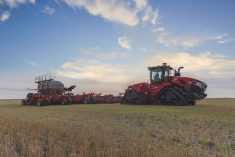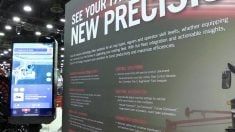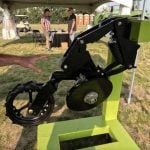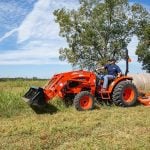Glacier FarmMedia – Last October, AGCO’s Fendt brand announced that its engineers were still working on the e100 concept electric tractor it debuted in 2017. It’s apparently a promising design making measurable progress toward possible future commercialization.
“The current development status of the Fendt e100 Vario compact tractor is encouraging and promises high efficiency with a careful use of resources,” says the company’s recent progress report.
In general, today’s overall movement toward vehicle and machine electrification extends far beyond just ag tractors. Arguably, ag equipment is lagging behind other sectors that now rely on big horsepower from internal combustion engines — take Class 8 trucks, for example.
Read Also
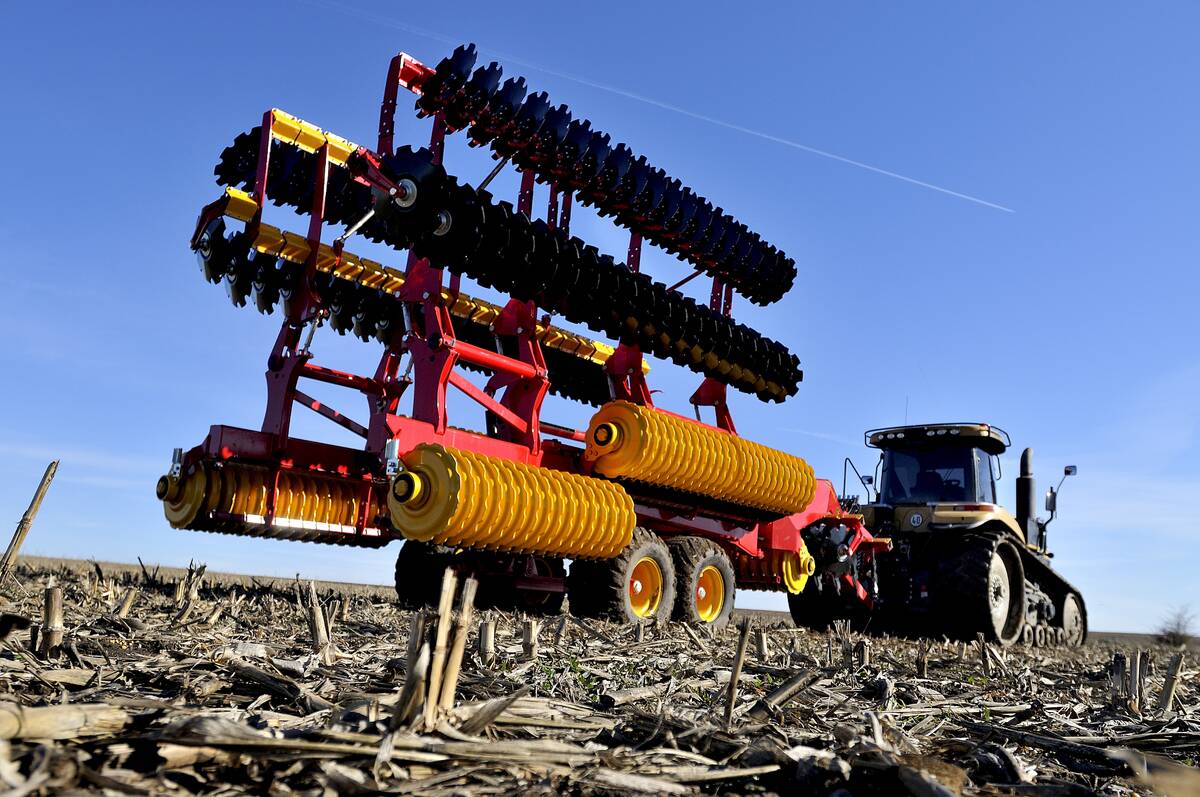
Evolution of European equipment manufacturers runs deep
A look at how Lemken and Väderstad have evolved from their traditional offerings of tillage equipment to include planting and seeding equipment in their lineups.
Numerous announcements were streamed throughout 2020 about electric- and hydrogen-powered heavy truck manufacturers beginning to dip their toes into the other-than-diesel-fuel commercial segment, with some electric and hybrid models already being eased into service in limited numbers in specific geographic locations — and at specific tasks to further evaluate their viability.
In a similar way, Fendt management has been exploring just where the 65-horsepower e100 might be a good fit — and not just on farms.
“In the last three years, potential uses of the Fendt e100 Vario have been further investigated and specific requirement profiles created,” the press release said. “In this time, the Fendt e100 Vario has undergone numerous practical tests set to a range of different requirements and tasks, from farming applications to municipal uses, including winter clearance work. Based on feedback, the Fendt e100 Vario has been technically revised and improved.”
For Fendt, electrification has been on the drawing board for a long time. In 2013, the brand made its hybrid X Concept tractor the centrepiece of its display at Agritechnica in Germany.
“This is a research study,” said Benno Pichlmaier at the time, then a Fendt engineer on the X Concept project. “It’s only for advanced engineering. It will not go into production in the next years (and he was right, it hasn’t). We are looking at what are the concepts of the future. We’re looking to have a discussion with the implement manufacturers because the tractor alone will not improve with the electrical system.”
His point, from those early days on, was that efficiency gains from electrification aren’t just a matter of replacing a diesel engine with an electric motor, it’s about refining entire drive systems. Being greener in terms of emitting fewer greenhouse gasses is another discussion entirely.
To provide some standardization to ensure engineers at all manufacturers were on the same page, the AEF (the Agricultural Industry Electronics Foundation) has been working to standardize electrical implement connections, essentially getting ahead of widespread use of the technology to prevent, as Michael Pankonin, senior director, technical and safety services, at AEM (Association of Equipment Manufacturers), described it back in 2018, preventing something like the old “Beta-VHS” incompatibility problem.
“It has certainly moved beyond the theoretical into the more practical,” he said of the then-evolving AEF standards. “Frankly, the thing (replacing hydraulic and pto drives with electrical) is designed around some pretty serious power transmission. They’re looking at 700-volt direct current and up to 150 kilowatts of power. Not all tractors are going to be able to put that out, but they didn’t want the connector or the interface (between the tractor and implement) to be a limiting factor.”

Such a system has the possibility to take over many of the driveline functions, Pankonin added. “I think it’s recognized that that has some really significant advantages.”
Back in 2013, the X Concept tractor was powered by a 200-horsepower diesel engine that drove a generator capable of supplying 130 kilowatts of power to an implement instead of providing hydraulic or pto drives.
The X Concept tractor was focused on providing only high-voltage current through a standard rear outlet. And marketers noted it was possible that the tractor, if it ever saw production, could even have additional lower voltage outlets capable of running typical electrical equipment like power tools, which was a feature John Deere included on similar 6RE concept tractors it introduced at the prior 2009 Agritechnica show. (They have long since disappeared.)
Also, at the 2015 Agritechnica, Fendt showed a 12555X electric-drive hay rake. And while it made for an eye-catching display, there was an acknowledgement of reality by the brand staff.
“I think the enthusiasm about electrification has plateaued,” said Morton Bilde, research engineering manager for harvesting equipment at Fendt, at the time. “We’re now more realistic about it, and we know there are many applications where hydraulics, for many years to come, makes the most sense. Other applications, mechanical drives, will still be undefeatable.
“Hydraulic will remain dominant for quite a while, no doubt. And also, you know, at Agritechnica two years ago (2013) there was a lot of hype about electrification. Everyone wanted to electrify everything. I think what we have learned over the past two or three years is we need to be really selecting what application makes sense and what application does not make sense.”
e100 tractor debut
Two years later, at the 2017 Agritechnica, the e100 tractor debuted. And at the last 2019 event, John Deere showed off its autonomous, tracked electric-drive concept power unit.
So how has the e100 evolved since 2017?
Well, the brand says it has re-evaluated battery charging methods, adding a “simple charging” system, noting most farms don’t have access to very high voltage DC (direct current) charging systems for rapid recharges.
“DC superchargers are yet to find their footing on farms and in the municipality sector,” reports the e100 update. “In light of this, the Fendt e100 Vario is now equipped with a Type 2 charging socket instead of a CCS socket. This tractor is also equipped with a charging cable for 400V sockets with up to 32A, which equates to a charging capacity of around 22kW. This means that the battery can still be fully charged in less than five hours. The tractor still features the DC fast charge function.”
These charging options make the e100 a little more practical, but usable operating time remains something on everyone’s mind. How long can it run?
The brand made no mention of that, but engineers are working on extending the running time and making the tractor more compatible with extreme climates.
“In the course of this further development, various battery systems were investigated, undergoing intensive testing in various field and lab tests,” the update notes. “With the all-new thermal management system, in just a few minutes you can preheat the battery to operating temperature in winter, and cool it in summer. Likewise, you can preheat or cool the cab.”
Even with better range, the e100 will likely not be suitable for all agricultural jobs in the near term. Determining where it works well has been a prime focus of R&D efforts.
“The Fendt e100 Vario has been a consistent hit in practical applications,” AGCO insists. “And the performance and versatility of the Fendt e100 Vario have been demonstrated in various field tests with conventional pto-driven implements — like tedders, rakes, feed mixers — as well as hydraulically driven machines like sweepers or electrically driven salt spreaders for winter service work. The Fendt e100 Vario can be used with new electrified as well as existing attachments.”
Now back to that environmental-benefit discussion. Does the e100 offer a gain there?
“In energy-producing farms (which are relatively common in Germany), the self-generated electricity (from bio-digesters and the like) can be used in a closed energy circuit with the Fendt e100 Vario,” notes the brand. “This minimizes the use of fossil fuels and reduces the farm’s CO2 emissions.…”
So, in that case, probably.
However, almost all North American farmers still buy electricity from the grid. What would be the cost of running the tractor? Could the current hydro-electric grid even handle a growing number of electric cars, trucks and tractors? If more power generation sources were needed, where would they come from? Would greenhouse gas emissions rise from those sources? Calculating carbon emissions can be complicated.
In the meantime, research and development continues on the e100.
“The Fendt e100 Vario battery-powered tractor will continue to be further developed in the future,” says the brand. “It is currently at a project stage dealing strategically with the electrification of agricultural equipment.”
This article was originally published at Grainews.






